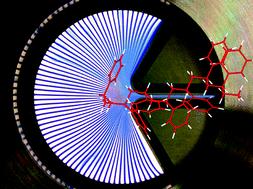Numerical simulation of polymerization in interdigital multilamination micromixers
Abstract

a
Laboratoire d'Ingénierie des Polymères pour les Hautes Technologies—Ecole de Chimie Polymères et Matériaux, 25 rue Becquerel, Strasbourg Cedex 2, France
E-mail:
SerraC@ecpm.u-strasbg.fr
Fax: +33 (0) 390 242 716
Tel: +33 (0) 390 242 718
b
Institut für Mikrotechnik Mainz GmbH, Carl-Zeiss-Str.18-20, Mainz, Germany
E-mail:
hessel@imm-mainz.de
Fax: +49 6131/990-305
Tel: +49 6131/990-450

 Please wait while we load your content...
Something went wrong. Try again?
Please wait while we load your content...
Something went wrong. Try again?
C. Serra, N. Sary, G. Schlatter, G. Hadziioannou and V. Hessel, Lab Chip, 2005, 5, 966 DOI: 10.1039/B500440C
To request permission to reproduce material from this article, please go to the Copyright Clearance Center request page.
If you are an author contributing to an RSC publication, you do not need to request permission provided correct acknowledgement is given.
If you are the author of this article, you do not need to request permission to reproduce figures and diagrams provided correct acknowledgement is given. If you want to reproduce the whole article in a third-party publication (excluding your thesis/dissertation for which permission is not required) please go to the Copyright Clearance Center request page.
Read more about how to correctly acknowledge RSC content.
 Fetching data from CrossRef.
Fetching data from CrossRef.
This may take some time to load.
Loading related content
